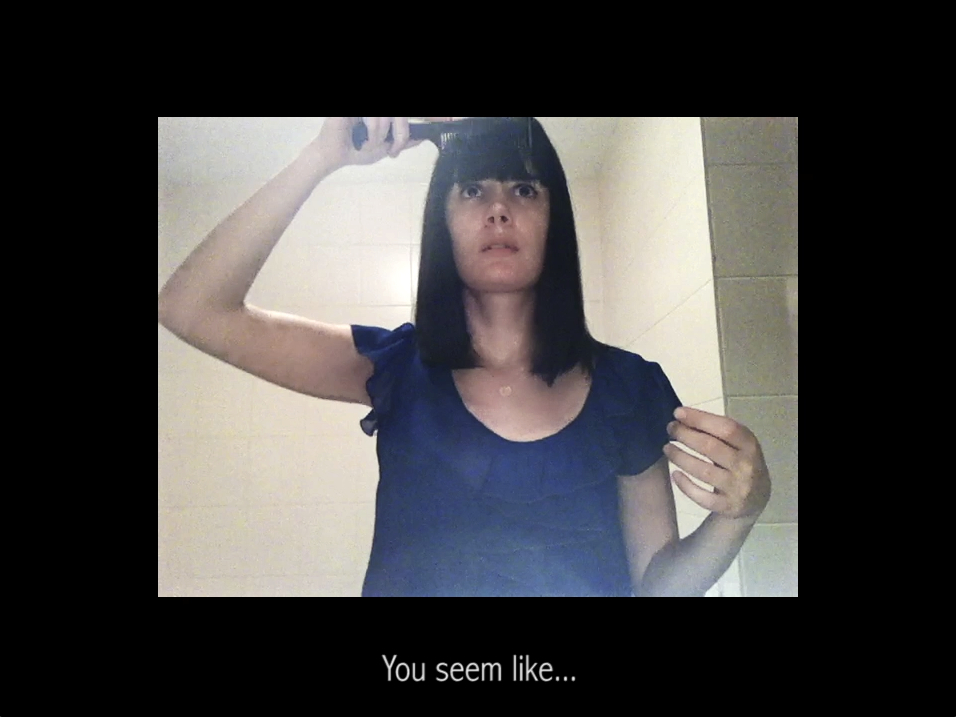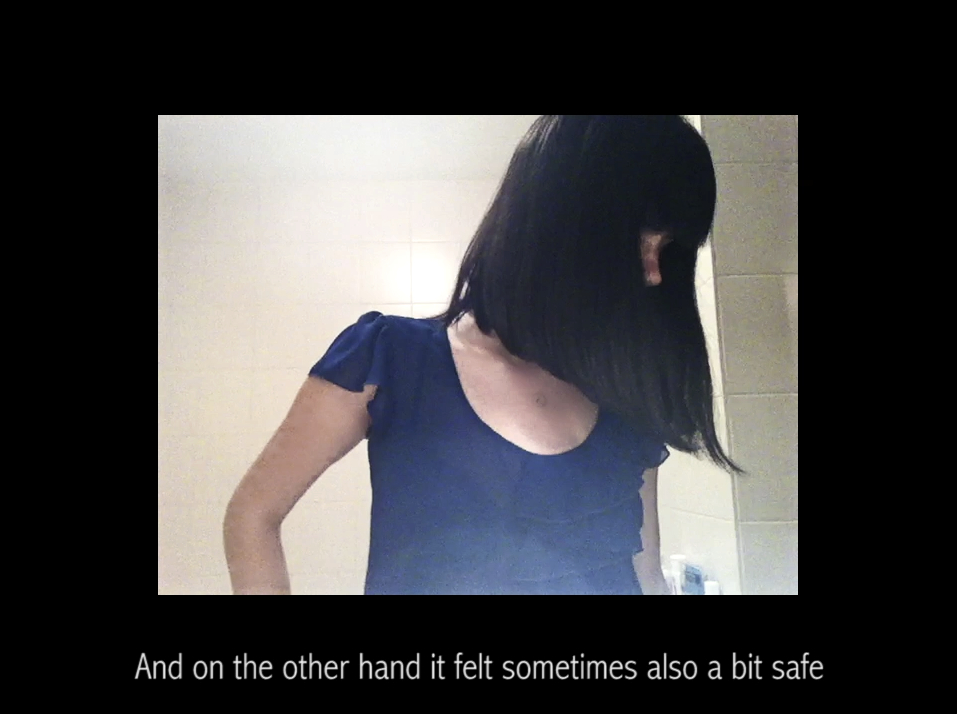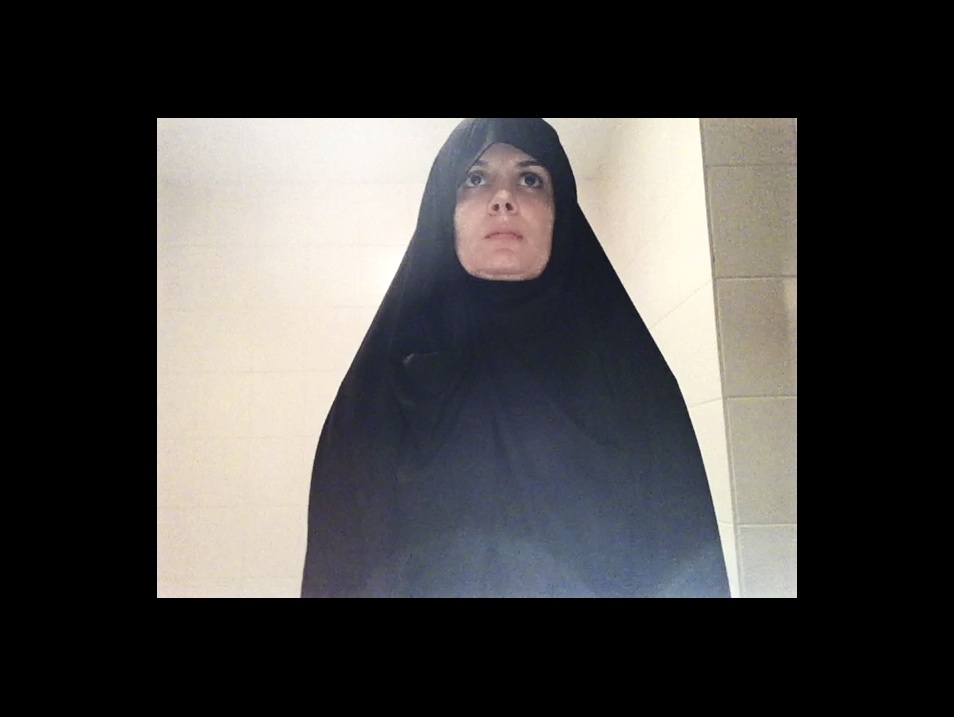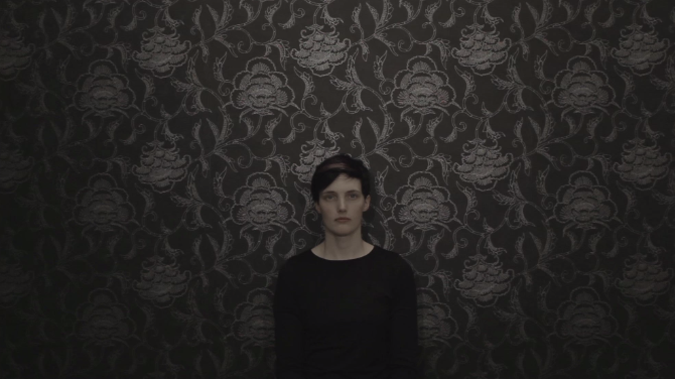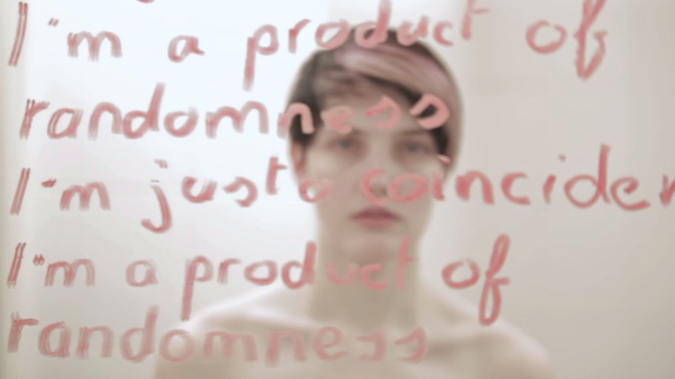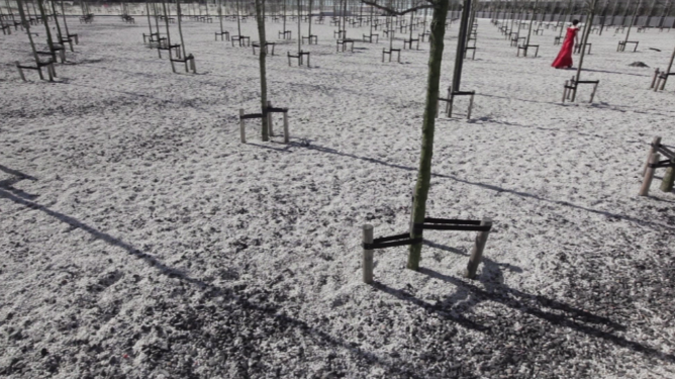User:Demet Adiguzel/Thesis Outline: Difference between revisions
No edit summary |
No edit summary |
||
| Line 1: | Line 1: | ||
<font size="6">THESIS OUTLINE</font> | <font size="6">THESIS OUTLINE</font> | ||
<br/><br/> | |||
<font size="5">ABSTRACT</font><br/> | |||
---- | ---- | ||
My graduation project will be about my cultural background. | My graduation project will be about my cultural background. | ||
Now I am making a thorough research on Alevisim, which is the name of this spiritual culture, and my piece will be about my own personal experiences as a religious minority in a mostly Muslim country. | Now I am making a thorough research on Alevisim, which is the name of this spiritual culture, and my piece will be about my own personal experiences as a religious minority in a mostly (Sunni) Muslim country. | ||
Therefore in my thesis, I will be dealing with the concept of identity, religion, Alevism and making a piece on such subjects. | Therefore in my thesis, I will be dealing with the concept of identity, religion, Alevism and making a piece on such subjects. | ||
| Line 12: | Line 11: | ||
I would also like to include the research I am conducting on Alevisim and the issues that this cultural group has faced in the past and is still facing today. | I would also like to include the research I am conducting on Alevisim and the issues that this cultural group has faced in the past and is still facing today. | ||
Since I am making a short film (and actually making it as a “personal documentary”), as an image maker who is pretty much keen on aesthetics and telling stories with images; I want to include a thought-map (annotations and reviews) on studies, books and related films/works which influence my self journey as a short film. | Since I am making a short film (and actually making it as a “personal documentary”), as an image maker who is pretty much keen on aesthetics and telling stories with images; I want to include a thought-map (annotations and reviews) on studies, books and related films/works which influence my self journey as a short film. | ||
<br/><br/> | |||
=CHAPTER I= | =CHAPTER I= | ||
==General Introduction== | ==General Introduction== | ||
| Line 87: | Line 86: | ||
On the other hand, I also made experiments to see the possibilities to intensify the images with audio. I have written text which I think made the end piece more meaningful. I have also used audio from a music box to give the relation to dreams and sleeping. | On the other hand, I also made experiments to see the possibilities to intensify the images with audio. I have written text which I think made the end piece more meaningful. I have also used audio from a music box to give the relation to dreams and sleeping. | ||
I know the end piece has this feel of a music video (as was expressed by some viewers) since the ''beauty'' of the images, however I am positive that it had became more meaningful when compared to the silent double screen version. | I know the end piece has this feel of a music video (as was expressed by some viewers) since the ''beauty'' of the images, however I am positive that it had became more meaningful when compared to the silent double screen version. | ||
=CHAPTER II= | |||
=CHAPTER III= | |||
=BIBLIOGRAPHY= | =BIBLIOGRAPHY= | ||
Revision as of 03:30, 8 March 2013
THESIS OUTLINE
ABSTRACT
My graduation project will be about my cultural background. Now I am making a thorough research on Alevisim, which is the name of this spiritual culture, and my piece will be about my own personal experiences as a religious minority in a mostly (Sunni) Muslim country. Therefore in my thesis, I will be dealing with the concept of identity, religion, Alevism and making a piece on such subjects.
I would like to start with bringing up the question of identity, how it is constructed and how it is further developed and changed.
I would also like to include the research I am conducting on Alevisim and the issues that this cultural group has faced in the past and is still facing today.
Since I am making a short film (and actually making it as a “personal documentary”), as an image maker who is pretty much keen on aesthetics and telling stories with images; I want to include a thought-map (annotations and reviews) on studies, books and related films/works which influence my self journey as a short film.
CHAPTER I
General Introduction
I want to make a short film delving into my own experiences for cultural and religious identity, which raises questions about nationality, language, immigration, roles, freedom, gender, class and loss.
I was an ‘other’ my whole life. Born into a minority, never felt belonging to any group, I could not grasp the shape of my identity. When I migrate to another country the feeling was more obvious.
Feeling lost and stateless, trying to find my identity; I ask these questions to myself.
Maybe knowing the answers would not help anything or give a way to explore it all.
For my graduation project, I want to explore what had construct my identity and made me me by the help of memories. Born into a small community with different religious beliefs than the majority, I had to hide my religious backgrounds from outside world to fit in. Living so many years undercover will be an element in my project. By exploring my memories, I aim to explore the culture I had to hide, the dominant outside culture and how religion played a role in my existence.
Relation to a larger context
The Stedelijk Museum Schiedam hosted an exhibition called In Welke Taal Zal Ik U Mijn Verhaal Vertellen (in which language shall I tell my story) in which the work of ten Turkish artists took place. The exhibition was devoted in themes like identity, origins, migration, changing social structures, perception of time as a measurable phenomenon and dreams of a better future.
In this exhibition especially the work of Seyit Battal Kurt took my attention since it was in the very format that I want to use in my project. It was a video installation of nearly 1 hour 15 minutes which I think was a little too long for a video installation, it may easily be a short film in a festival for the eyes who want to appreciate it fully - like mine. The installation “Qanok” was about Kurt’s story of going back to his home town which is a beautiful village in the eastern Turkey very close to the Armenian borders – was actually once inhabited by Armenians. While seeing these beautiful images, we hear his stories in three languages; he tells his memories in Turkish, his hopes and dreams in Kurdish and the transpiring events of the present in Dutch. In one sentence he uses also English to reveal his interest in animes.
He starts with explaining in Dutch how he wanted to make a film about his village but could not get permission from Turkish government since he has the Dutch passport. Then we are introduced with his memories of going to the Netherlands as a child. The images change from the great mountains of Turkey to coast of Netherlands.
In one scene we see school children of the village singing a song which made me literally cry, it was really touching for me but again it made me think if it was the same experience for everyone since as the viewer my punctum may be different than the Dutch couple in their fifties next to me. I was homesick, whereas they were having a window of another culture which seemed interesting to them in the comfort of their own country.
Mr Kurt’s sudden transitions of village and Dutch city life makes a strong contrast of the culture; you see the beautiful fields of yellow flowers where children are playing and singing on a sunny day changed into –almost interrupted by- the image of a dark bar where people seem more distant. He uses this technique couple of times, I almost think it’s overdoing it.
The landscapes are really brilliantly captured. However in some of the scenes I find myself thinking that these beautiful images should be captured in really high quality, to avoid that amateuristic look – yes I know that’s just me but when I think of my own project, I know I want it to have certain quality that differentiate it from any home video that was captured by any camera.
The cultural elements make the everyday life in a village make interesting visual tales; like making bread, sheepshearing, milking animals. Meanwhile we hear the sincerely told memories of the author.
I find this work very related to what I want to do. The way it handles the subject of migration and nostalgia is really close to what I wanted to do in my work. The languages play a role in setting the tone of in a way unfulfilled identity, the richness of a new formed culture. We see the way that this young man becomes and the longing to a simpler life of childhood in the background. Once he was somebody else, talking in a different language now he is in another world trying to reach his roots, “Where did our family come from?” he asks. We see his family all named with Turkish names talking Kurdish.
In the future, I plan to make an interview with Mr Kurt if and when he is available.
Relation to previous practice
Descriptions on the last 2 works
Mirror Mirror On The Wall
Mirror Mirror On The Wall, is a 7-and-a-half-minute long video starting with the 30 year old female subject in front of a bathroom mirror in a blue top, doing her morning routines such as combing her middle-length hair and her bangs, doing make-up, brushing teeth. It is almost like surveillance footage, in low quality, poor lighting and unflattering angle. The footage is in the middle, not covering the whole screen, it is rather small so there is a big black frame around it.
During the video we see the subject seem modern and ordinary, looking at the mirror and getting ready while the camera shoots her in front of the mirror slightly from below. Meanwhile we hear the audio of telephone-like conversations, which may not make sense at first. It starts with a female voice telling how she saw something and what it meant to her, so the opening line is “It was a black blanket for me…” then we hear male voices trying to define something black and supposedly a dress.
The video goes on with the same shot, with different parts of three conversations in which a female voice and two male voices try to define and explain how someone seemed during a specific day. Meanwhile the footage still show the subject getting ready until she slightly leans down and reaches for something that we do not see in the frame. Afterwards we see her covering herself in a hood little by little turning into a chador.
While she concludes her morning routine with covering herself up with a cloth that hides her hair, a fourth voice asks a question “Did you ever wonder what was under(neath) the outfit?”, the three voices one by one reply “No”. We see the subject not moving after covering herself, her last action being getting in the chador, now she does not go further with getting prepeared; just looks at the mirror, then looks down.
The footage was shot by an iPhone 4 camera using natural light and was edited in a way to give a certain surveillance feel. The audio was taken from the conversations that were done with my class-mates as interviews on how they felt and found my appearance in class as a woman in a chador (as opposed to my normal self). During these conversations I asked them certain questions aiming to answer the question if they had felt anything different about me when they saw me wearing a chador, if they knew what that type of garment is used for. While editing I tried not to give away the subject of the interview till the end and tried to keep the suspense till I got in the chador in the footage.
For this video I spent several days in an outfit which I would not normally wear and obviously states the beliefs of the person who wears it. I wanted to see how I would feel in it and how would people react to me, to see if anything would change in the way people treat me. I came to class wearing the outfit and in the video, I included the interviews that I had made with the people I see almost everyday; my classmates.
In this video the interviews are revealed while the visuals show myself doing my morning routines in front of a bathroom mirror and then getting in the chador as an obvious transformation into another identity. I wanted it to be apparent that there is an absolute transformation with a simple piece of cloth and also emphasized it with the pieces from the interviews. I think I succeeded for this aim.
I also think that in terms of telling a story with the help of audio and images, this piece has a significant success. To compose the audio and video in order to tell a story, to combine them in a way that it starts with a suspense and ending with revealing the answers was my aim. For the audio, since the actual story is told by others, when it is combined with the images of myself, it makes it more interesting to watch.
In my opinion, the work could be more interesting if there were more conversations – more voices therefore (and hopefully) more interesting opinions and findings about the experiment I had in the outfit. As an alternative, the footage could be shorter so that the conversations can be more frequent.
In general I find this piece a good example of how the audio and image in my work can work together.
The Absence
The Absence is 3 minutes 34 seconds of moving images looping as two screen installation. Totally silent videos start with almost abstract images. On the left hand side the screen is white and on the right hand side is gray. Both screens move and within the same shot there appears a brunette female in her twenties looking out the window which suggests that the abstract beginning scene was snow flakes floating out the window. Meanwhile the abstract bubbles in the right scene became clearer suggesting that it is surface of water being poured into a tub. When the scene slowly moves we see a foot appearing in the right screen while the left screen starts to show the female’s hand.
While the left screen changes to black blank screen, the female appears in a close up shot sleeping in the right one. In the next shot both of the screens we see the female staring at the camera with icy blue eyes. In the left screen she appears from her chest up, we see her shoulders naked. While she stares at the camera with a blank look, we also see some writings in front of her as if they were written on a mirror which she looks through to the camera. Slowly the focus of the camera changes to the writings and the female becomes blurred. Meanwhile on the right screen she appears in front of a black wallpaper with a pattern of gray flowers on it. She does not move. Both screens turn to black blank screens at the same time.
From week 6 till week 13, we have shot every weekend (with the exception of one weekend) once or twice. Some of the intended scenes could not be shot because of the time constraint – simply because of the season. For some of the scenes, the image was edited with special effects by the help of After Effects program. The general editing was done in Adobe Premiere. For all shoots Canon 5D Mk II camera was used.
In most of the scenes we see the reality shift, the viewer cannot be sure if it is real or just imagination. The reason I wanted to use two screens was that I wanted to give realities as different layers which are interactive with each other in a way. For instance; the opening scenes start with almost abstract images later composed to show the character. In left scene we start with her face and when we see her hand, the other screen reveals her foot slowly. We see the contrast of her beautiful face by her graceful being and brutally damaged (dancer) foot in water.
For most of my work I use symbols but try to avoid explaining everything by allegories. The certain elements of fairytales and their religious representations impress me. This work includes allusions to certain fairytales but more importantly, to religions.
In this work, I still am not satisfied with the outcome. During the shooting, I have thought of every scene and what they might mean. However even though the shooting was thoroughly done, there was not enough time to do the editing in the same manner. Therefore, I still see this work as a work-in-progress and try to work on it from time to time.
Since I am now exercising on the story telling with the images, I have re-edited this footage in order to tell a more concrete story and tried to only include the important symbols and scenes in one screen. That is because I think this piece is not too strong in telling the back story and since I (over)used the black blank screen in this piece, I think it prevents the audience to include themselves in the story.
I worked on a way to use the strength of the images to grasp the attention and curiosity of the audience.
On the other hand, I also made experiments to see the possibilities to intensify the images with audio. I have written text which I think made the end piece more meaningful. I have also used audio from a music box to give the relation to dreams and sleeping.
I know the end piece has this feel of a music video (as was expressed by some viewers) since the beauty of the images, however I am positive that it had became more meaningful when compared to the silent double screen version.
CHAPTER II
CHAPTER III
BIBLIOGRAPHY
Autobiographies :
- Jung, C. Anilar, Dusler, Dusunceler : Carl Jung's autobiography for concept of memory and identity
- Ozlu, T. Cocuklugun Soguk Geceleri : Analyzing Tezer Ozlu style for memories; very inspired by it. Time is irrelevant, memories call each other, collection of memories happening at the same time. The language is very sincere and bald, the tone is slapping with words.
- Umay Umay Ororspu Kirmizi : another inspirational way of approaching memories
On Alevisim :
- Kaleli, L. Binbir Cicek Mozaigi ALEVILIK
- Kaleli, L. Anadolu Gercegi Alevilik
- Pehlivan, B. Aleviler ve Diyanet
- Timuroglu, V. Alevilik, Bektasilik, Siilik, Kizilbaslik
- Tuleylioglu, O. Namlunun Ucundaki Mahalle – Gazi Mahallesi Olaylari 12-13 Mart 1995
- Tunc, A. Maras Kiyimi – Tarihsel Arka Plani ve Anatomisi
Tarkovski, A. Muhurlenmis Zaman : reading also in English (Sculpting in Time)
Films
- Autobigraphical works by Tarkovsky (Mirror), and Nuri Bilge Ceylan (Kasaba)
- "Persepolis" by Vincent Paronnaud, Marjane Satrapi
- for format style: Qanok by Seyit Battal Kurt, La Jetee by Chris Marker
“Wanna see” list
- Yalcin, S. Menekse’den Once
- Arsever, E. Bir Ses Boler Geceyi
- Dogan, Z & Eskikoy, O. Babamin Sesi

